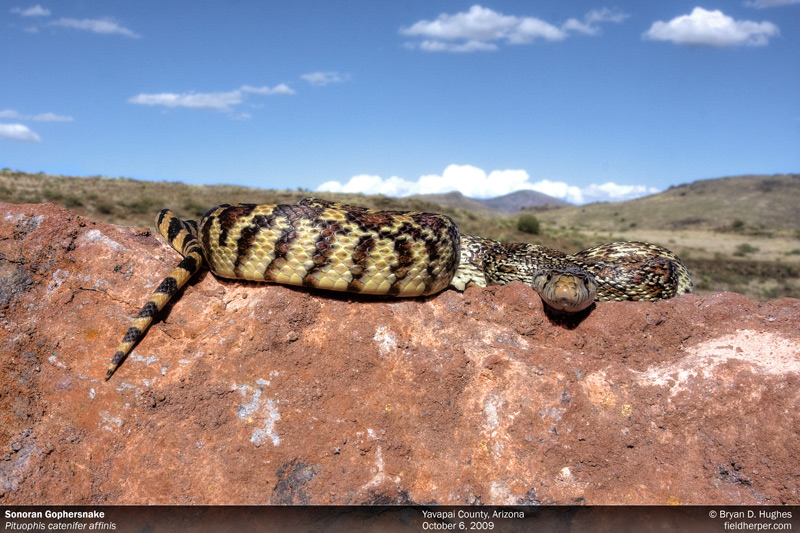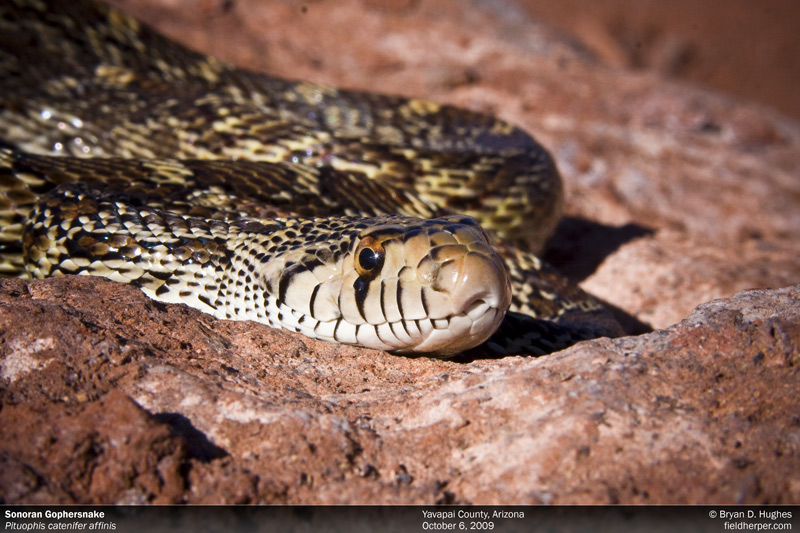This is the only non-rattlesnake pit viper I’ve ever seen in the wild, holding more perfectly still than I have heard they usually do. It ended up a good moment, with the sun going down in the mountains of West Texas behind us.
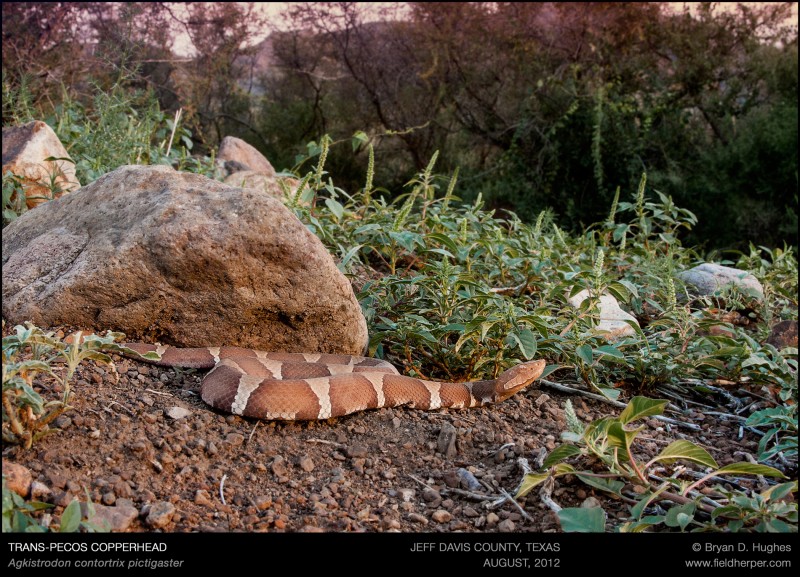
This is the only non-rattlesnake pit viper I’ve ever seen in the wild, holding more perfectly still than I have heard they usually do. It ended up a good moment, with the sun going down in the mountains of West Texas behind us.

I was hiking in a canyon in the extreme Northern part of Arizona, trying and failing to find Grand Canyon rattlesnakes, when a pebble fell and hit me. I looked up, and found this chuck doing a terrible job at not giving himself away.
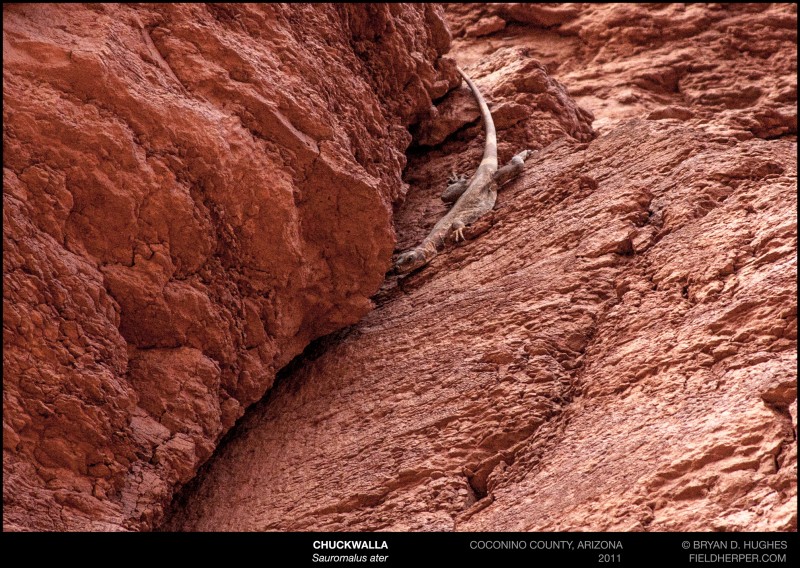
Here’s a little bit of HDR from when I was playing a bit too heavily in that technique. This Texas Horned Lizard was almost as big as my hand, and he knew it. When I approached, it puffed up and wasn’t going anywhere, instead standing sideways looking difficult to swallow. He wins, I didn’t eat him.
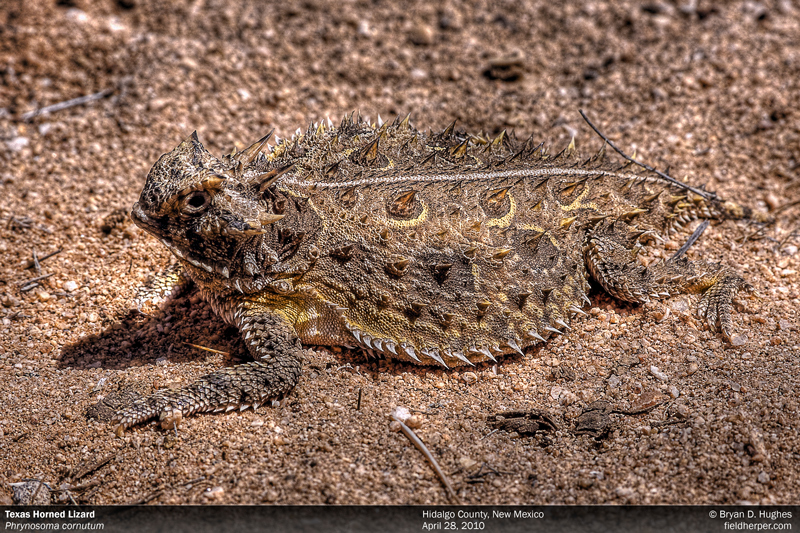
One more shot of this cool guy.
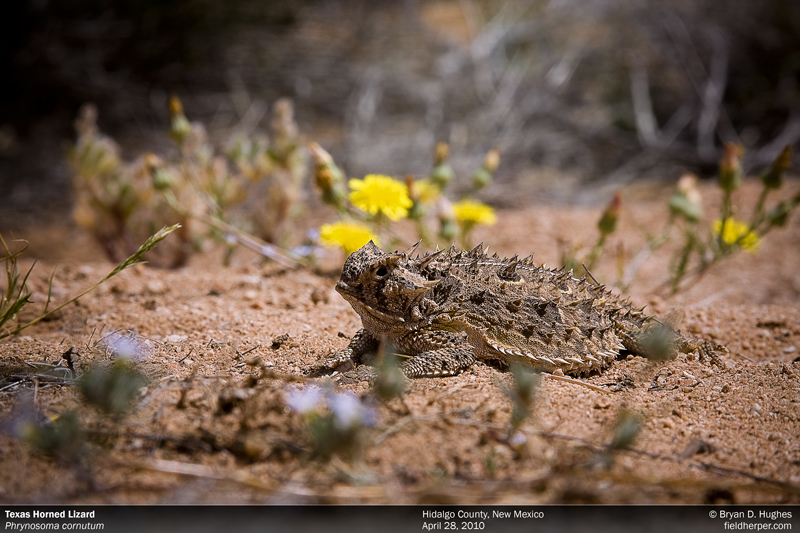
Warning: if you’re going to drive through anywhere in Nevada, be aware that there are vast distances with zero gasoline involved. After driving past numerous snakes this particular May morning, scared to stop because I had to get another 70 miles on this quarter tank of gas somehow, I saw this gophersnake. I’d seen quite a few great basin gophers on this trip, but enough is enough; I needed to stop for something. The result is one of my favorite road shots I’ve ever taken, if not my absolute favorite. Perfectly straight road littered with Area51 junkshops and absolutely nothing else – except thousands of square miles of untouched habitat. Unlike most snakes I find on a road, I left this one to just crawl off on its own. In 4 hours I’d only seen one other car, and I didn’t expect any others any time soon.
I made it to a gas station, too, on fumes. Whew!
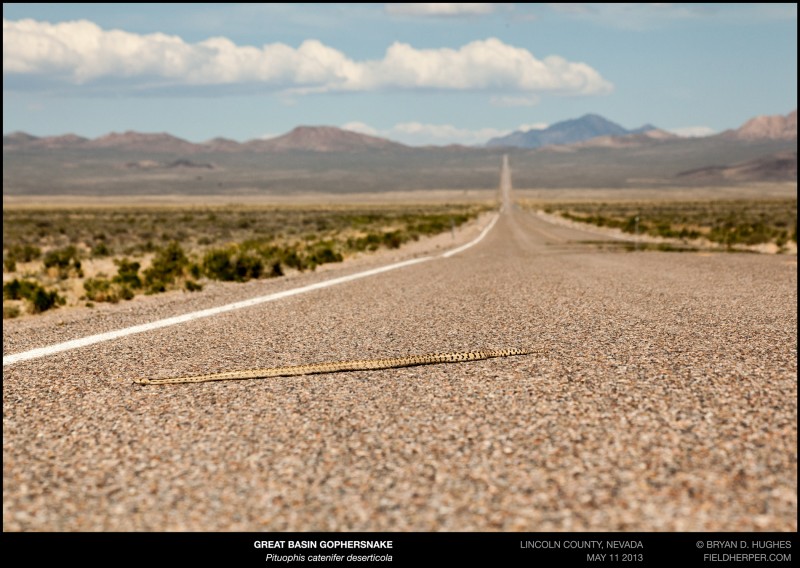
In Arizona, our local gophersnake is usually misidentified by locals as a bullsnake. You can’t blame anyone – the differences between the subspecies of Pituophis catenifer are mostly geographic – but it’s still fun to label this one a bullsnake, being the sayi flavor instead of the usual affinis. I found him crawling right on the border between New Mexico and Texas (Texas being the grass just off to the left in the photo, making this still a New Mexico animal), acting the same as any other member of his genus likes to do.
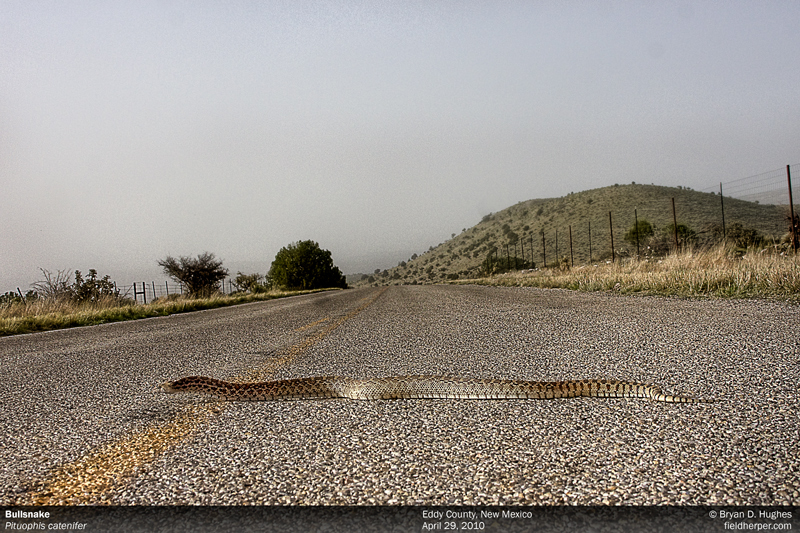
This is another common sight on route to target areas – a Sonoran gophersnake basking on the warm, wet sandy road. This one is in Pinal county.
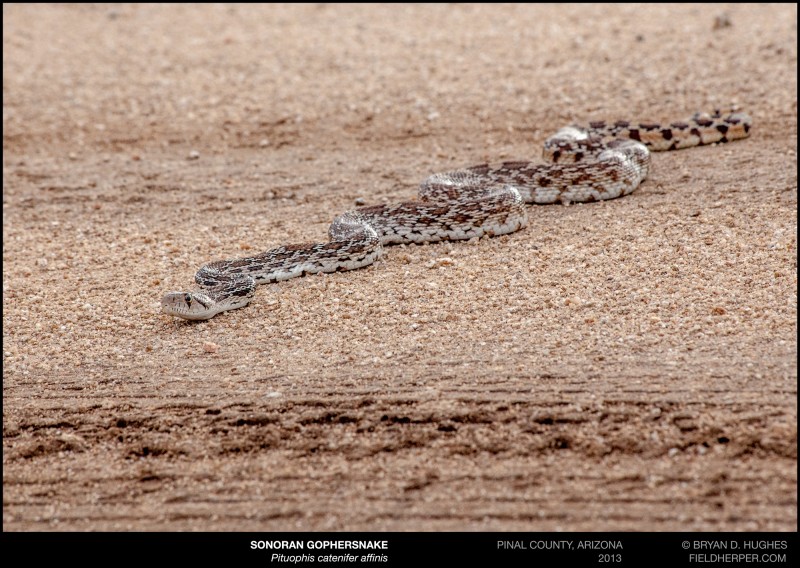
Techniques change over the years, as to tastes, abilities, and questionable creative judgement.
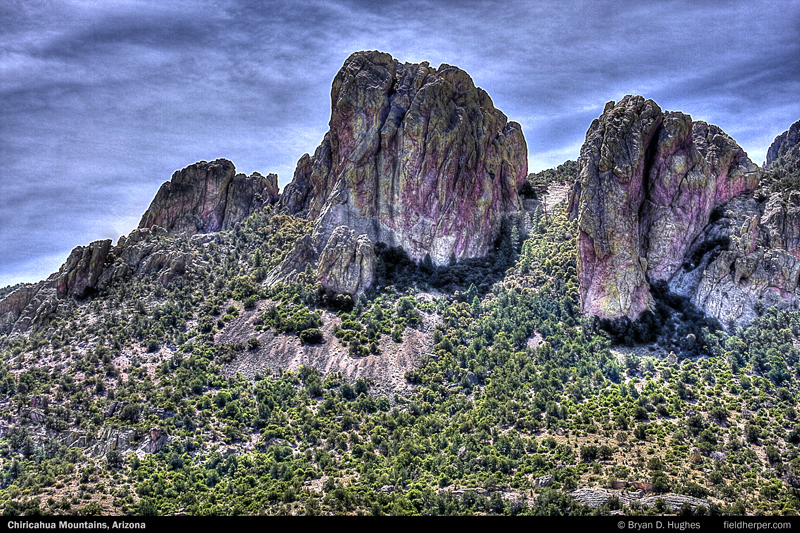
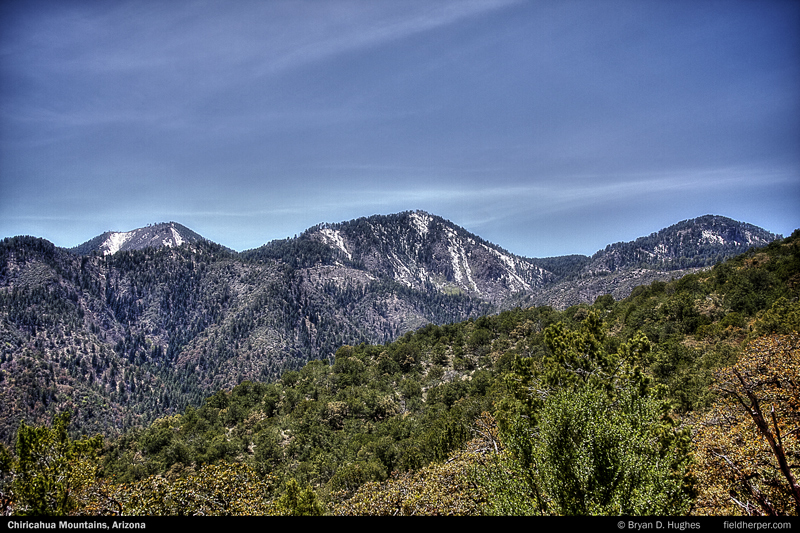
This is a large adult, hiding behind a very poorly chosen rock. Nobody tell him that I can totally see where he’s hiding.
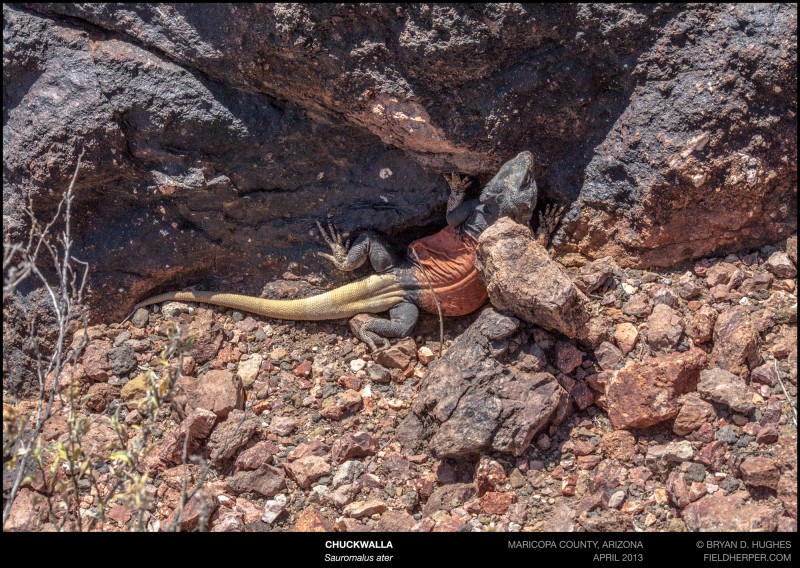
That’s seriously what it’s called. Who’s in charge of naming these things?
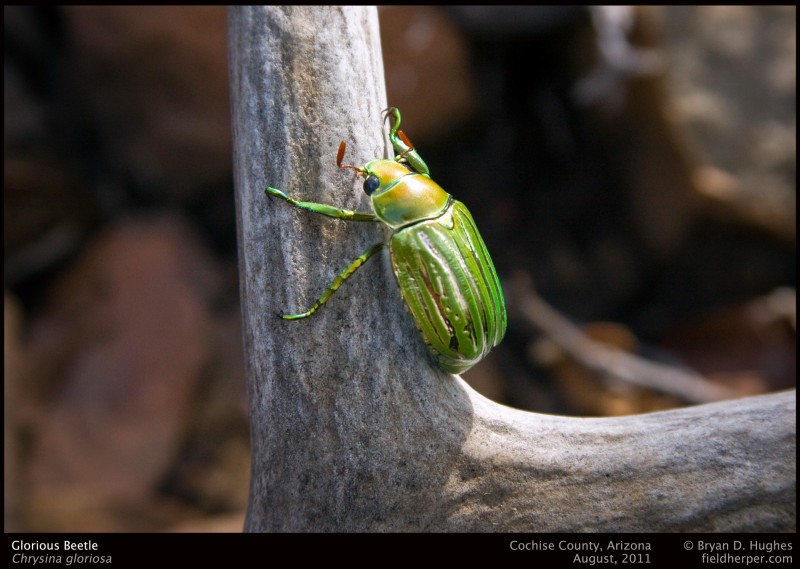
The day this posts, I’ll be knee-deep in Crotalus oreganus lutosus in Idaho and Oregon.
I know right where he is, and he still seems to just disappear. These little round tailed horned lizards are common as dirt in their range in Eastern Arizona, and are easy to find with their white bodies in contrast to the black pavement. Take them a few feet off the road though, and *poof*; where’s my lizard!
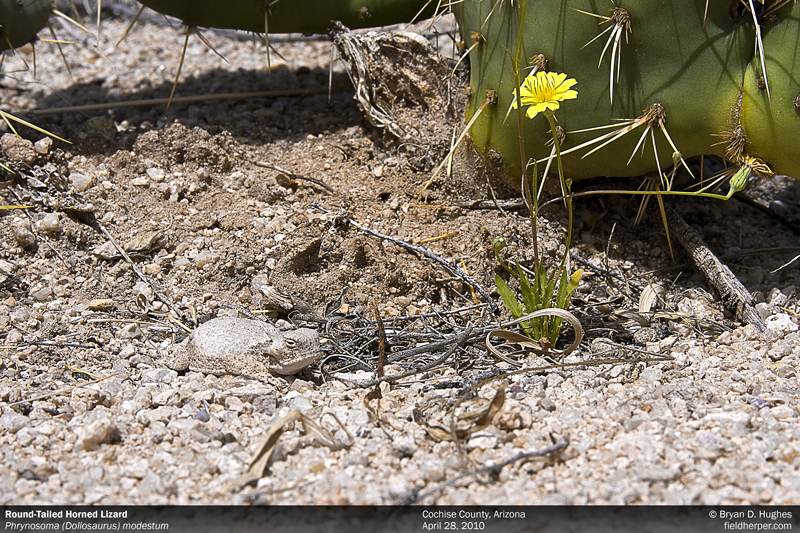
These are my friends Rich and Jon as we stopped to look at a Sonoran Gophersnake crossing a road, on route to look for Arizona Black Rattlesnakes for the day. It’s just a snake on a road, but these are always great memories.
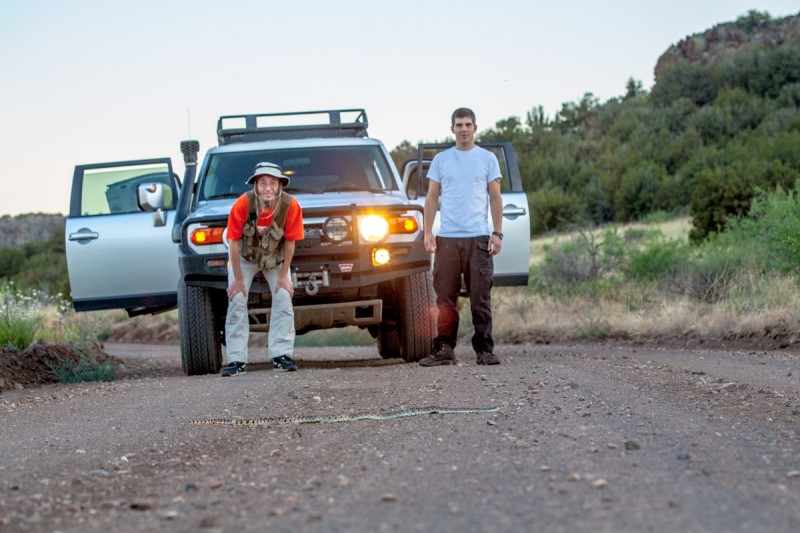
This is a terribly posed photo, one of the victims of rushed herping. Anyone that does this knows the conflict of being under the gun as the sun starts to get things going while you’re still miles away from where you’re going to spend the day, and finding a snake! I see enough gophersnakes, but I got a rushed photo anyway with a bit of backdrop behind this big old girl.
